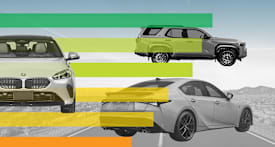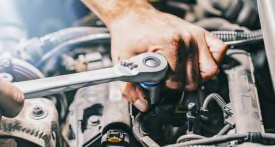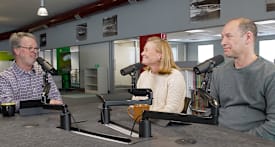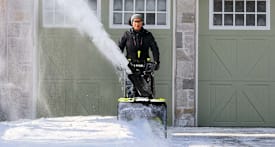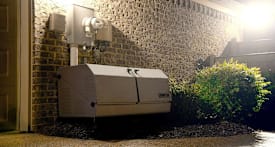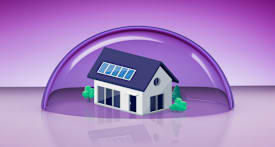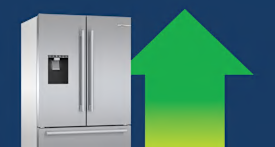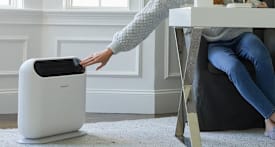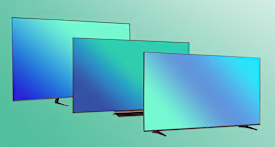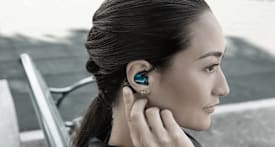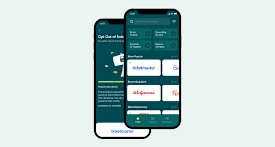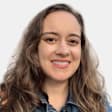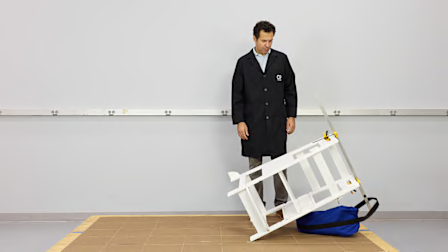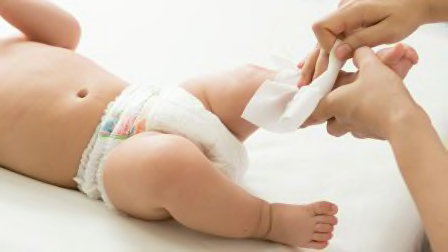Pediatricians Warn That Weighted Baby Blankets, Sleep Sacks, and Swaddles Are Not Safe
One such weighted product was linked to at least one infant death, regulators say
Update: In August 2024, Sen. Richard Blumenthal (D-Conn.) introduced a bill that would ban weighted sleep products for infants and categorize them as "banned hazardous products" under the Consumer Product Safety Act. And in April 2024, Amazon, Target, Babylist, and several other retailers said they would no longer allow weighted sleep products to be sold in their stores or on their websites, citing safety concerns.
Weighted blankets have become popular with adults suffering from insomnia or anxiety, who say that the product’s comforting pressure makes sleep come more easily.
But some companies, including Dreamland Baby and Nested Bean, are now marketing weighted sleep products—including wearable blankets and swaddles—for babies, even newborns. That’s raising alarm among pediatricians and many product safety experts, including those at Consumer Reports, who say that these products are being sold with no safety standards in place and little to no evidence that they’re safe.
Last month, the American Academy of Pediatrics said in a letter to the Consumer Product Safety Commission that these weighted products should never be used for babies.
“There’s no regulation of these,” says Rachel Moon, MD, a professor of pediatrics at the University of Virginia in Charlottesville and the chair of the AAP’s task force on sudden infant death syndrome. “People assume that if something is on the market, somebody has deemed it safe,” she says, but that’s not the case in the U.S.
The CPSC, a federal agency responsible for ensuring that consumers are protected from dangerous products, recently updated its safe sleep guidance for infants, to advise caregivers not to use weighted blankets or weighted swaddles, citing guidance from both the Centers for Disease Control and Prevention and the National Institutes of Health. The agency told CR last year that it was aware of at least one report of a fatality involving a weighted infant product.
Sold Before Proven Safe
The weighted products sold by Nested Bean feature plastic beads sewn into the fabric to place “gentle pressure” specifically on the baby’s chest, weight that the company says “feels as light as your palm on your baby’s chest.” Dreamland Baby’s weighted products distribute the weight evenly over the baby’s entire body.
Nested Bean says it has sold 2.5 million units, and Dreamland Baby says it has sold over 500,000.
Multiple Dangers
Medical experts say that even the “gentle pressure” described by the manufacturers of weighted sleep products can be dangerous for infants for multiple reasons.
First, a baby’s body is inherently different from an adult’s, and putting any weight on its chest is problematic.
“When babies are first born, their rib cage is not rigid,” Moon says, “and so it doesn’t take a lot of pressure to press on it and create obstruction there. It makes it harder for them to breathe, it makes it harder for their heart to beat properly if there’s pressure on there.”
Second, these products can make unsafe sleeping positions harder to get out of. Pediatricians recommend that babies be put to bed on their back, which is the safest position to avoid sudden infant death syndrome (SIDS). If very young babies are wearing weighted products and happen to roll over onto their stomachs, it will be harder for them to roll back over into a safer position. And if the weighted parts of the blanket or swaddle shift out of position on the baby’s body and cover the baby’s mouth or nose, that poses a risk of suffocation.
Finally, as much as parents may not want to hear it, “You don’t want your baby to sleep for 12 hours at night,” Moon says, and not just because young babies need to wake frequently to feed.
“In terms of babies who die of SIDS, what we think is happening is that they can’t wake up; there’s a problem with their arousal,” she says. If they get into a situation where they aren’t getting enough oxygen or have too much carbon dioxide in their system, a too-deep sleep can inhibit their ability to startle, wake, and restabilize their systems. “When babies wake up in the middle of the night, that is actually protective.”
Don't Wait for Tragedy
The CPSC didn’t provide CR with details about the infant death involving the weighted product that its staff learned about.
But there are at least two reports of sleep-related deaths of infants who were wearing a weighted sleep sack or swaddle in the CPSC’s public incident report database, though the infants had at the time been placed in an infant lounger, another risky baby product identified by the CPSC. So it’s unclear how or whether the weighted products contributed to the deaths. Two other reports to the CPSC describe parents who worried about suffocation after a weighted swaddle bunched up near their baby’s mouth.
The AAP says regulators should act now rather than wait for more tragedies.
“Waiting for the emergence of confirmatory data about these concerns while these products proliferate is an unacceptable outcome when each of those data points will be a family whose lives are forever marked by unfathomable tragedy of their infant dying from a sleep-related death,” the letter says.
The AAP’s Rachel Moon sees a similarity between weighted sleep products and another dangerous category of baby products—inclined sleepers. For years, Fisher-Price claimed that its popular Rock ’n Play Sleeper was safe despite concerns among pediatricians and a lack of public disclosure about related deaths. But a 2019 CR investigation revealed for the first time that dozens of infant deaths were linked to the sleeper—a number that eventually climbed to over 100. The whole category of baby products was later banned.
“With the Rock ’n Play, there were millions and millions of [the products] on the market before these deaths were revealed,” she says. “So not having the data is very different from saying that it is safe.”
What's a Voluntary Standard Anyway?
Product safety experts also worry that ongoing efforts to develop safety standards for these products are likely to be insufficient.
For one thing, they point out that the current standards being considered would only be voluntary and established not by the CPSC but by a group called ASTM International. That’s an organization that convenes industry, safety advocates, and experts of various fields to develop standards that participating manufacturers voluntarily abide by. (CR is a member of ASTM and regularly participates in meetings, representing the consumer interest.)
While that system can, in some cases, come up with meaningful standards, critics worry that it can be too heavily slanted toward an industry that may have a vested interest in watering down protections. Some of those expressing concern are members of the task force creating the standard, including advocates.
The task force looking at weighted sleep products is co-chaired by Tara Williams, the founder and CEO of Dreamland Baby.
Dreamland Baby’s public relations representative, Samantha Breen, said that ASTM asked Williams in December 2021 to do this and that she has worked to “ensure that all stakeholders have had an equitable contribution to the standard.”
The AAP also opposes the voluntary standard-making process for weighted sleep products for babies because, it says, any kind of “safety standard” for what it considers an inherently unsafe product will give parents and caregivers the wrong message.
“Most of us felt we shouldn’t even be talking about this,” says Nancy Cowles, executive director of Kids in Danger, a nonprofit group focused on product safety who has attended the ASTM meetings. “It’s harder to convince [parents] that something could be on the market and not be safe, once it meets a standard, even if the standard was written by the industry itself.”
That’s a concern apparently shared by at least one member of the CPSC itself. During a discussion of weighted sleep products for infants in a public meeting in May, the CPSC’s commissioner, Richard Trumka, said, “It might not even be worth our time to be engaged in voluntary standards discussions on products that lack utility and do pose a hazard.”
Some other attendees of the ongoing ASTM task group meetings have argued that the products should at least include a warning label stating the AAP’s concerns or a recommendation that consumers consult their pediatrician before using them, according to the attendees. The task group ultimately decided against that language in its warning label standard.
Dreamland Baby didn’t respond to CR’s question about whether it would consider adding warning labels to its products. Nested Bean responded that the company “is happy to explore cautionary labeling as standard practice for all wearable blankets . . . as part of the ASTM standard-making process.”
Dan Bergels, ASTM International’s director of communications, didn’t answer CR’s questions about the ongoing standard-making process but said the wearable blankets subcommittee would discuss the AAP’s letter in a meeting in August.
The Safe Sleep for Babies Act, signed into law in 2022, banned both inclined sleepers and crib bumper pads, and was prompted in part by CR’s investigation into inclined sleepers. But that law applies only to those two product types, not to baby sleep attire like swaddles or sleep sacks.
“It is always deeply concerning when there are infant products for sale online and in stores that contradict clear expert medical guidance,” says Oriene Shin, policy counsel for CR. “Manufacturers of infant products must take measures to ensure that all the products they sell are decisively supported by the data and proven to be safe. Parents put immense trust in companies when purchasing items for their babies and deserve nothing less than products designed and tested for safety.”
Editor’s Note: The article, originally published July 26, 2023, has been updated to include new guidance from the CPSC on the use of weighted blankets for infants.

